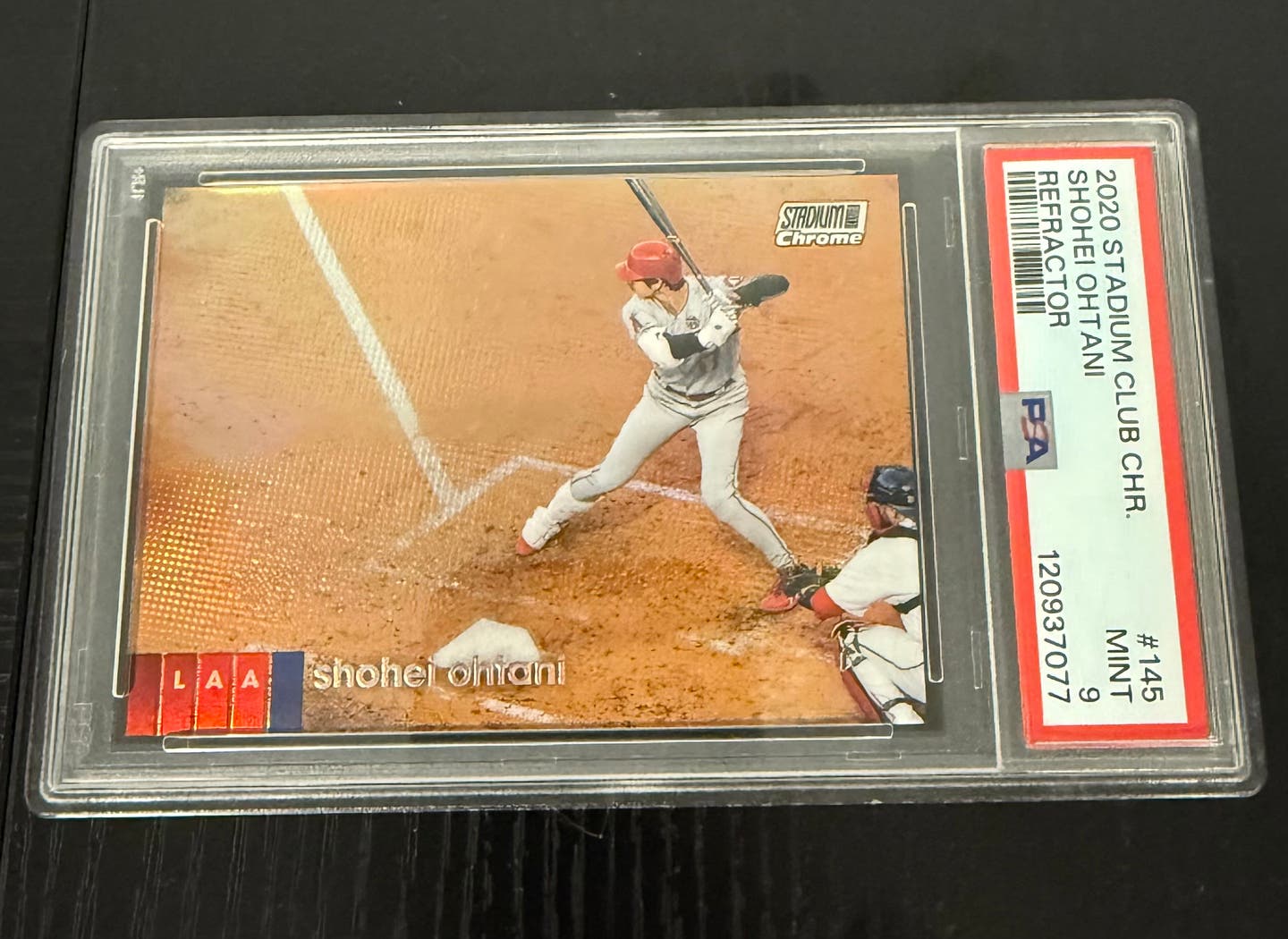Featured
Collectors voice their opinions about ‘Buyer Beware’ in the hobby
By Jeffrey S. Copeland
The article “Is ‘Buyer Beware’ Always Appropriate for Our Hobby?” (SCD, Feb. 16, 2018) touched a nerve with many collectors and dealers. Within three days of the piece appearing, responses flooded my in-box.
Before I share the thoughts of those who replied, a quick recap of the article is in order, especially for those who may have missed it.
To summarize, I purchased a “raw” (ungraded) T206 Chief Bender card for $250 from a prominent card dealer, sent the card off for grading to one of the “Big 3” grading/authentication services, and the company would not grade or encapsulate the card because it judged the card as having been trimmed/altered. This was quite unsettling to me on many levels, so after much deliberation, I contacted the seller to see what his policy was in cases such as this. At the end of the article describing this experience, I asked SCD’s readers to weigh in on the situation by letting me know which of four alternatives they believed to be most appropriate, given the specifics of the situation. The four choices were as follows:
Choice 1: Caveat Emptor: The buyer is just out of luck, and the dealer has no further responsibility.
Choice 2: Shared Responsibility: The dealer should refund one half of the original purchase price to the buyer.
Choice 3: The dealer should refund the entire purchase price to the buyer.
Choice 4: The buyer should take the card, since it is in “raw” condition, to another show and attempt to sell it to another collector or dealer without disclosing its flaw.
The responses came fast and furious. The first dozen set a tone that seemed likely to continue in subsequent notes. To a person, these individuals suggested—quite strongly—that Choice 3 (the dealer should refund the entire purchase price) was the only “right” option in these situations. Some of their thoughts on the matter included:
“A seller who wants to earn and maintain a good working relationship with his customers should be willing to accept return of forged or doctored cards and refund the full price. This does put a burden on sellers to check higher priced cards thoroughly, but that goes with being a dealer.”
“Definitely a full refund! When the auction house Sotheby’s inadvertently auctions off a forged painting and the forgery is later discovered, Sotheby’s refunds the entire purchase price to the buyer—even after years have gone by before the forgery is discovered. Sotheby’s understands the importance of maintaining its integrity in a competitive business, and card dealers should do the same!”
“A full refund must be done! Given the choice of working with a dealer who has a caveat emptor philosophy or one who stands by the authenticity of his cards, I will always choose the dealer who brings full integrity to his business—and everyone else should, too!”
“It is the dealer’s responsibility to give a full refund. Selling cards is their job, and they should be the expert. If they don’t give the refund, why would that buyer do business with them in the future? Years ago, I bought a 1954 Bowman Ted Williams by mail, but when it arrived, I didn’t like the way it looked, thinking it might be counterfeit. The dealer was certain it was authentic but refunded my money without question. I still buy from this dealer to this day.”
“There is a long-standing practice among retailers of replacing or refunding purchases of damaged merchandise. It is a cost of doing business, and it is good business in that it engenders goodwill and loyalty in the customer base.”
However, just when I thought there would be a landslide of Choice 3 responses, the tide started turning. The voices of those who favored Choice 2 (“shared responsibility,” with the dealer refunding one half of the original purchase price) started pouring in, and their opinions were as strong as those who favored a full refund. Comments in this group included the following:
“The dealer should refund one half of the original price. After all, that’s only fair because of the risks dealers take themselves in purchasing cards. They don’t always know if what they buy is the real thing or an altered item, so they shouldn’t be held totally responsible.”
“As a dealer both very part-time and, sometimes, full-time since 1986, this has happened to me a few times as well. The last couple of times I have offered Choice 2 (refunding half the purchase price) with the buyer keeping the card. It is not perfect, but I lose less and the buyer gets to keep something that is usually better than what he had before.”
“I do believe there should be shared responsibility between the buyer and the dealer because any reputable dealer will want to know that they sold a fraudulent or altered card. Out of integrity, the right thing for them to do is remain in good faith and offer the buyer a partial refund. Shared responsibility keeps the whole system above board for everyone.”
At the same time, many others had vastly different thoughts related to Choice 2. Here are a few representative samples from these notes:
“Assuming the dealer did not post a notice stating ‘50% refund on altered merchandise,’ I find this choice disturbing. I suppose it is the dealer’s right to employ such a policy and I would grudgingly comply. I would, however, exercise my own right to refrain from purchasing from this dealer in the future.”
“If an individual bought a new—but defective—car, would you be willing to split the difference with the dealer?—OR would you want a full refund? No difference here than with the FBI sting operation on deliberately forged autographs. The imprisoned culprits would be very happy to refund 50 percent to the defrauded buyers in order to get out of jail.”
“Choice 2 allows unethical dealers to thrive. Example: I deliberately buy trimmed/altered cards—OR trim them myself. I buy such a card for $5 and sell for $55. The buyer returns, I pocket $25 profit, and the buyer is stuck with a $20 loss assuming the card was worth $5. In essence, Choice 2 is no better than Choice 1 (caveat emptor).”
“Unless the two parties agreed to discard or permanently remove the altered card from the hobby, the seller and the buyer did not ‘share responsibility’ equally.”
After a week of receiving responses, I found the opinions started evening out, and it appeared determining a clear winner would be a tough call. It was at this point the notes started coming from those who self-identified as card/memorabilia dealers. While those who chose Choice 2 and Choice 3 responded immediately and emphatically, dealers seemed to take some extra time to formulate their opinions. I must admit the dealers raised issues I never considered earlier, and I’d guess many others didn’t either. First of all, most of the dealers said their general policy was Choice 3—a full refund provided to the buyer. Some of their comments included the following:
“This is my business, my livelihood, and I feel a certain amount of trust comes with that. I’m supposed to be the expert, so if an altered card gets by me, I feel it is my responsibility to offer a full refund to the buyer.”
“I don’t believe ‘caveat emptor’ has a place in this hobby. This hobby is about trust, honesty, and comaraderie, first and foremost. In these situations, I always provide a full refund.”
“As a reputable dealer, if I have a customer that encounters an issue with a card, I return the purchase price in order to keep that customer.”
“If I have developed a good business relationship with the customer and know the customer well, then I always opt for providing the full refund. I feel that is only fair, and the right thing to do.”
While impressed by the honestly and integrity displayed by these individuals, at the same time I also noticed quite a long list of “buts…” following their main comments. These additional thoughts—these “buts…”—were added after these dealers said their general policy was to provide a full refund, and I admit these extra comments gave me much to think about. Some of these were as follows:
“How does the dealer know that this is really the same card he sold to the buyer? The buyer’s honesty and trustworthiness are at play here, too. Once the buyer leaves the show/store (or the dealer’s sight), a wide range of scenarios can play out.”
“My answer is a hesitant #3, depending on the relationship between dealer/customer and the amount of time which had passed. Having a hard and fast return policy for ungraded cards means the dealer is also trusting that the customer wouldn’t alter the card and then return it.”
“I also wonder how many folks buy from dealers at large shows like The National and have no memory from whom they made a specific purchase, or have paid with cash (which is common at The National) and have no proof that they even dealt with a certain dealer… that can make returns/refunds impossible.”
“In the alternative, it would also be fair to try to renegotiate a fair price based on the new information. A trimmed version of that card might not be worth the (original price), but it certainly still has value. The buyer could keep the trimmed card with a negotiated and compromised refund.”
“It doesn’t happen often, thank goodness, but I’ve had some buyers try the old ‘switcheroo’ on me, whether they were doing it knowingly or not. Because of this, I now take high quality, close-up, digital pictures of every ungraded card I have in my inventory with a value I judge above $150. This allows me to know if a card someone is trying to return is actually the card I sold to him. If it is, I offer a full refund immediately. If it looks like it isn’t the same card, a tough conversation then takes place between me and the customer—and I hate those conversations. However, now that so many are having their cards graded, this comes up more and more.”
These “buts…” made me appreciate the many challenges faced by a card/memorabilia dealer today and how trust and honesty, on both sides of the dealer table, are always at play.
And what did people think about Choice 1— “Buyer Beware”— as the solution?” Over a hundred individuals sent in responses to the article, and only four suggested this was the appropriate conclusion to the situation. One of these respondents was quite emphatic on this point:
“Buying a raw card is a calculated risk, a dance if you will, between seller and buyer. If the card were graded and authenticated, the price would be in many cases three to four times higher than in raw condition. So, the buyer is gambling here that the card will turn out fine, and if it does and the buyer is able to get the card graded, the buyer is way ahead. In other words, the lower price for a raw card means to me the buyer is the one who is then responsible if the situation turns bad. Buyers can’t have their cake and eat it, too. That’s why I firmly believe Buyer Beware fits this best.”
Others wrote in with an opposite view on this choice as well, such as this one:
“If there is no practical way for a buyer to detect alterations or trimming, then a policy of caveat emptor would be totally unfair to the buyer. How can a buyer ‘beware’ if there is no means of detecting the conditions he should ‘beware’ of?”
Yet still another added,
“This is not a good solution because buyers, who are mostly hobbyists, rely on dealers for most of their purchases. If dealers want to continue to be the hobby’s source for collectibles and knowledge, then they should honor and stand behind everything they buy, sell, and trade. If a dealer just wants to be a middle-man and profit on a transaction, then I don’t want to buy from that dealer.”
Not a single soul suggested Choice 4 (passing along the card without revealing its flaw) would be the best option. However, several did express strong opinions about this choice in their responses, this one being typical: “Reselling a card that you know has been altered and not disclosing that fact to a potential buyer is unethical in my opinion, so that option is out.”
Another said, “This choice is morally and ethically unsupportable and must be rejected out of hand.”
Others put it much more bluntly, with one saying anyone who would do such a thing does not belong in our hobby. Still another suggested a good flogging with a knotted stick would be too good for the perpetrator involved. I “think” he was kidding….
So, what does all of this mean? In the original article, I posed this question: “Is ‘Buyer Beware’ always appropriate for our hobby?” When the comments of all of those who responded are taken as a whole, the answer to that question is a resounding “No.” Clearly, most believe caveat emptor is not the solution to situations like these in this hobby.
According to rule of law in a courtroom, which was brought up in detail by two respondents who self-identified as attorneys, “Buyer Beware” would most of the time win the day. However, even both of these attorneys/collectors said they supported Choice 3 as best for this hobby—because our hobby is about so much more than the financial aspects, that we are more about preserving history, building friendships with other collectors and dealers, and savoring the pure joy of collecting.
However, even though most who wrote in didn’t believe “Buyer Beware” should be the rule in our hobby, as long as the specter of the “but…” issues brought up by dealers are potentially there in transactions, there will always be much debate on all sides of this issue. This is also why respondent after respondent offered the following suggestions and pieces of advice for collectors when approaching future purchases:
Ask the dealer’s policy for such situations before making a purchase. The buyer will then know what to expect and will be able to determine whether he/she wishes to follow through with the transaction.
Whenever possible, try to establish good business relationships with dealers so that both parties come to know and trust each other. Realistically, this isn’t always practical because many purchases at shows and other venues are from dealers one might never see again. However, whenever possible, “familiarity” can help ease communication if an altered card pops up.
Surprisingly to this writer, a large number of respondents suggested the following: Purchasing “raw” cards will, in many cases, carry a certain amount of risk. (One respondent likened the purchase of a raw card to a “crap shoot.”) Therefore, buyers should decide what financial loss they could live with if the card turned out to be altered. If the purchase price is too significant to lose, then perhaps the buyer should move directly to the purchase of a graded/authenticated card instead.
In the end, after the dust and ink settled, both dealers and collectors alike were, first and foremost, interested in making sure the dealings were fair and just—and that both parties were satisfied with the transaction. I’d say this is a pretty good barometer that the state of the hobby is quite healthy and strong—and will remain so as we all move forward with our collections. This is a comforting thought, one that reminds me once again just how fortunate we are to have this hobby as a part of our lives.
Finally, I promised I would reveal how my transaction ended up involving the T206 Chief Bender.
Once the dealer I purchased the card from found out the card had been professionally trimmed, he offered a total refund of the purchase price. Once that had been established, I returned Mr. Bender to him and waited for his check. I was happy with this resolution, but I was also mindful that I had also paid a fair sum of money for the grading service and the cost of postage. I knew I was just out that money, but the professional manner in which the dealer handled the refund helped ease that loss.
So now the search begins anew for an upgrade for my “chewed by a badger” Bender card, and the thrill of the chase builds once more. Ah, what a wonderful hobby we have.
Jeffrey S. Copeland is a contributing writer for Sports Collectors Digest, as well as an author. He can be reached at jscottcope@gmail.com.








